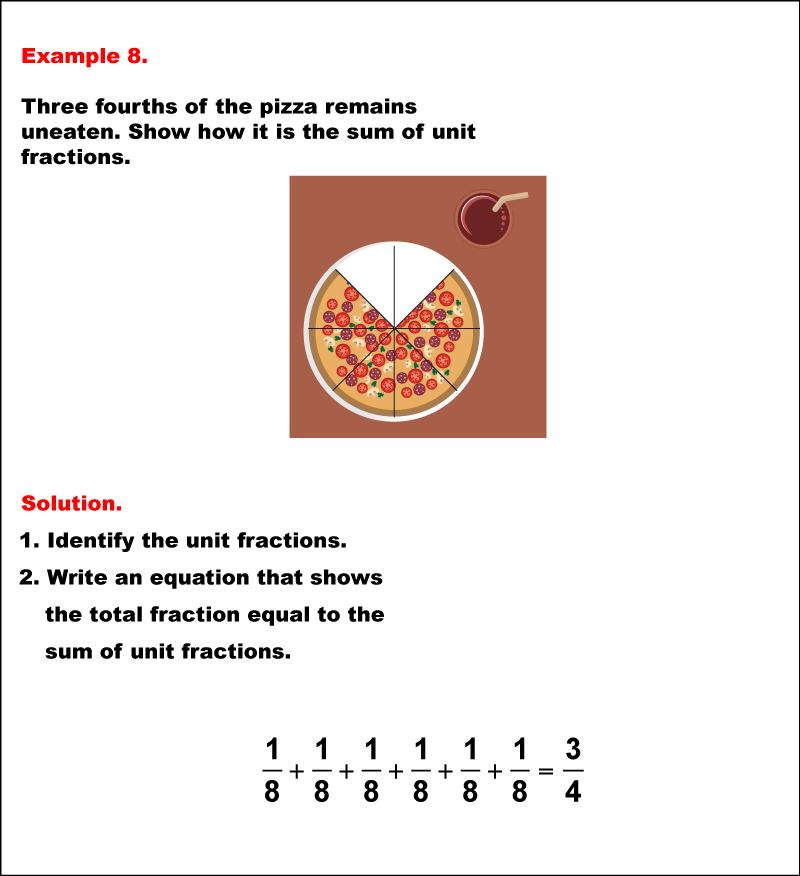

Decompose math definition examples series#
What seemed a daunting equation to calculate was decomposed into a series of smaller and simpler sums, allowing us to work out our final answer with general ease and making the larger equation much easier to solve.\] Functional decomposition has its origin in mathematics, where it refers to the process of analyzing the links and relationships between all the components that. It is related to the polar decomposition.

mean in math answer Definition and examples of decompose define decompose What does. We subtract 4 from 15 to get a final answer of 11 and our equation has been solved. In linear algebra, the singular value decomposition (SVD) is a factorization of a real or complex matrix.It generalizes the eigendecomposition of a square normal matrix with an orthonormal eigenbasis to any matrix. Answers Decomposing Numbers in Math - Definition, Methods, Examples. Tinally, let’s complete our additions and subtractions. Next, let us complete our divisions: (30 / 2) - (12 / 3) is 15 -4. Since the top left of our equation is a multiplication, let's do this first: It doesn’t matter in which order we do multiplication and division. The next step is to solve any indices (powers), however since there aren’t any present, let’s move straight on to our multiplication and division. They have no meaning related to mathematical thinking, so I think its a good. Therefore, let’s complete the addition in our brackets and see what the equation looks like: Learning to compose and decompose numbers is an important early math skill. The first step to solving maths equations is to solve our brackets. BODMAS (Brackets, Other / Indices, Division, Multiplication, Addition, Subtraction) tells us what order we need to solve operations in. Before we start our decomposition let’s have a quick reminder of the rules involved when solving maths equations. There are a lot of steps involved when solving this equation, so the best way to calculate an answer is to decompose it. In KS2 the key concepts of decomposition will be revisited, however there will be a much stronger link to mathematics and computer science whilst learning takes place.Ī fantastic example of a decomposition activity at KS2 would be to look at mathematical functions and break them down into their individual components. This is the heart of decomposition: taking a complex and seemingly impossible problem and analysing how best to find a solution. Now let’s find out whether our character has blonde hair:Īs you can see, by asking a series of targeted questions we were able to establish that the chosen character must be Christian, as there was nobody else on the board that met our criteria.īefore our decomposition of this problem, we were faced with quite a daunting task – how do we work out who our opponent has chosen in a group of 16 people? However, by breaking the problem down into a series of smaller, easier-to-manage problems, we were able to find a solution with relative ease. Next we could find out whether our character has hair: Having narrowed down the options the next question asked could be “has your character got black hair?” the answer to which would be “no”. This is a glossary of math definitions for common and important mathematics terms used in arithmetic, geometry, and statistics. For example, 62 + 37 decomposed is 60 + 30 + 2 + 7 which equals 97.

This has immediately narrowed down the remaining choices on the board: To decompose in a math problem, separate the digits into their place values. Young students, for example, might notice that three and seven more is the.

The first question could be “have you chosen a male character?” to which the answer would be “yes”. (e.g., the meaning and operations of whole numbers, including simple math. I have decided that Christian is my character, and now it is down to the other player to try and work out whom I have chosen. Let’s play a round using the character named Christian: Strang, Linear Algebra and Its Applications, 2nd Ed., Orlando, FL, Academic Press, Inc., 1980, Various pp. base ten block math tools used by students to learn basic math concepts. In the game Guess Who, the aim is to try and find out which character the other player has picked by asking a series of questions to try and narrow down the possibilities to only one. Always add what is in parenthesis first different grouping does not change the sum.


 0 kommentar(er)
0 kommentar(er)
